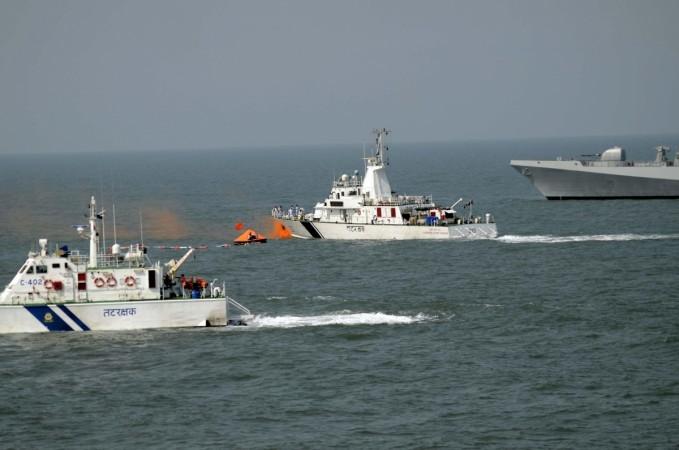
Claiming that India is drawing its own conclusions, the Pakistan foreign office rejected India's 'bomb' boat theory on Saturday.
Meanwhile, Indian authorities are on the lookout for a second suspected terror vessel near its maritime border with Pakistan after the explosion of a suspicious Pakistani boat off the Gujarat coast on Thursday.
The second boat, which also came from Karachi, was spotted around the same time as the first one, top sources told The Times of India. The authorities have been keeping an eye on the Pakistani vessel off Keti Bandar.
The Coast Guard had been surveying the two boats that came from Pakistan since December 31, said an official. "The first one blew itself up after it was being chased by the Coast Guard ship near the maritime border off Keti Bandar. There was allegedly a second boat as well which was in operation. The search is on for the second boat. The second boat tried to mingle with the fishing boats on the Indian coast," he said.
According to sources, the second boat tried to slip under the radar, but a Coast Guard aircraft managed to get its approximate location and its monitoring is underway.
As soon as the terror outfit, suspected to be LeT, got to know about the fate of the first vessel, the second boat went back into Pakistani waters, compelling India to opt for a cautious approach, said sources. The two boats were trying to mask their presence amidst the numerous fishing boats in the area. "The second boat is now back in Pakistani waters, and hence we are treading carefully. It is a high risk exercise for us too," said the official.
The suspected 'terror vessels' had taken a more roundabout route than what fishing boats usually do when they enter Indian waters. The boats had set out in a straight line from Pakistan but changed course towards Indian waters once they went into the high seas, said sources.
According to another official the first boat altered its course towards Pakistani waters once Coast Guard ship Rajratan was diverted to tail it. "At that time, the sea was rough, the boat switched off its lights, we tried to communicate to channel 16 (a radio channel), but they did not reciprocate. We started firing, but they did not come out and they instead returned fire. They then blew themselves up."
Officials said the Coast Guard and Indian Navy were prepared for something like this after receiving some intelligence inputs on 28 December. On December 30 evening, a specific intelligence was conveyed by National Technical Research Organization (NTRO), the technical intelligence agency under the National Security Adviser, which gave the rough location of the two boats.
The Coast Guard vessels sailed out from Gandhinagar and Mumbai on 31 December and 1 January, since it seemed like Mumbai was the target of attack once again.
As the operation unfolded, gambit tactics were used to shadow the vessel allowing it to enter deeper into Indian waters, soon after which the first boat was intercepted by the Coast Guard ship.














